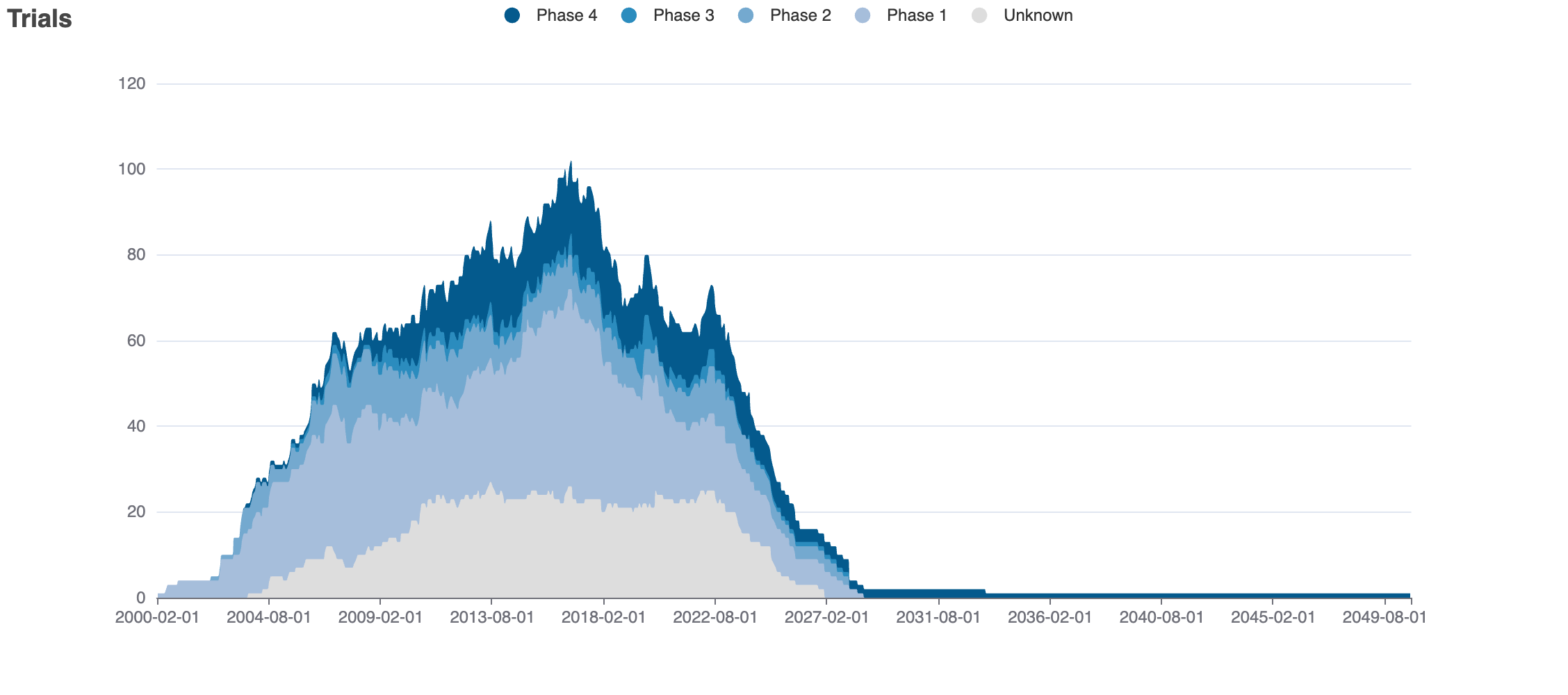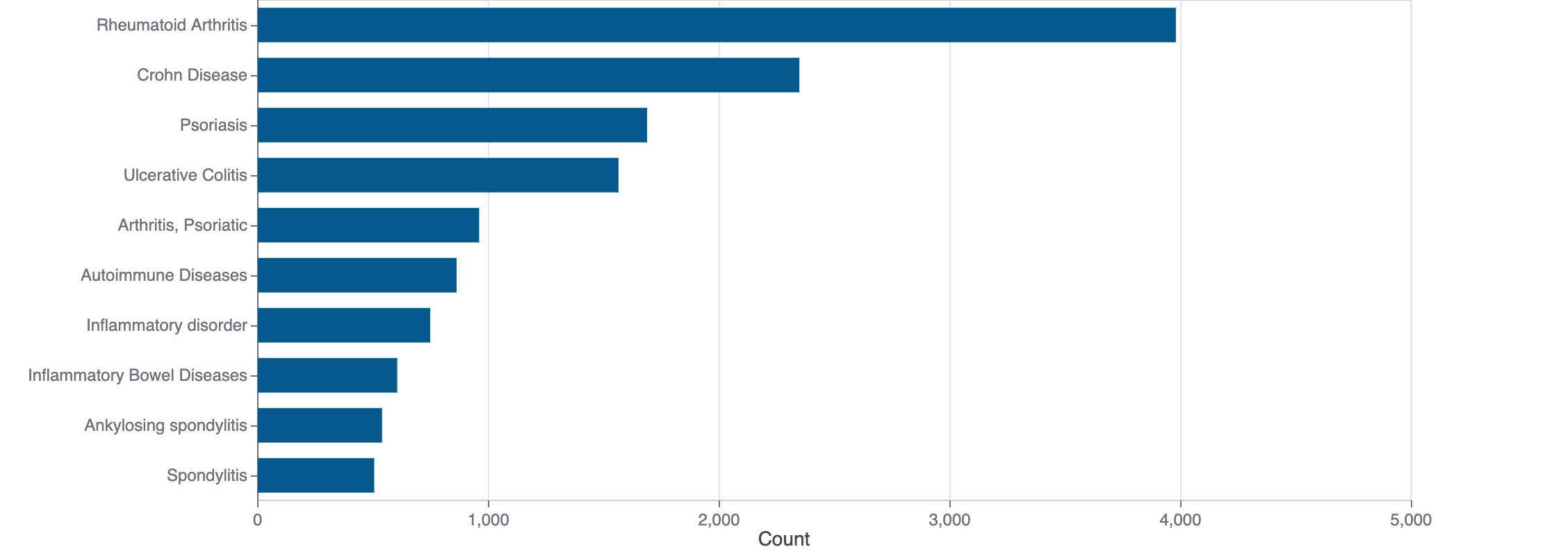DRINABANT
Drinabant is a small molecule pharmaceutical. It is currently being investigated in clinical studies.
Download report
Favorite
Events Timeline
Commercial
Clinical
Drug
Target
Variants
Financial
Trends
Safety
Events Timeline
5D
1M
3M
6M
YTD
1Y
2Y
5Y
Max
Events
FDA approval date
EMA approval date
Patent expiration date
Study first post date
Last update post date
Start date
Primary completion date
Completion date
Results first post date

Mock data
Subscribe for the real data
Subscribe for the real data
Commercial
No data
Clinical
Clinical Trials
3 clinical trials
View more details

Mock data
Subscribe for the real data
Subscribe for the real data
Indications Phases 4
No data
Indications Phases 3
No data
Indications Phases 2
Indication | MeSH | Ontology | ICD-10 | Ph 1 | Ph 2 | Ph 3 | Ph 4 | Other | Total |
|---|---|---|---|---|---|---|---|---|---|
| Schizophrenia | D012559 | EFO_0000692 | F20 | — | 1 | — | — | — | 1 |
| Alzheimer disease | D000544 | EFO_0000249 | F03 | 1 | 1 | — | — | — | 1 |
| Obesity | D009765 | EFO_0001073 | E66.9 | — | 1 | — | — | — | 1 |
| Dyslipidemias | D050171 | — | — | — | 1 | — | — | — | 1 |
Indications Phases 1
No data
Indications Without Phase
No data
Epidemiology
Epidemiological information for investigational and approved indications
View more details
Drug
General
| Drug common name | DRINABANT |
| INN | drinabant |
| Description | Drinabant (INN; AVE-1625) is a drug that acts as a selective CB1 receptor antagonist, which was under investigation varyingly by Sanofi-Aventis as a treatment for obesity, schizophrenia, Alzheimer's disease, Parkinson's disease, and nicotine dependence. Though initially studied as a potential treatment for a variety of different medical conditions, Sanofi-Aventis eventually narrowed down the therapeutic indications of the compound to just appetite suppression. Drinabant reached phase IIb clinical trials for this purpose in the treatment of obesity but was shortly thereafter discontinued, likely due to the observation of severe psychiatric side effects including anxiety, depression, and thoughts of suicide in patients treated with the now-withdrawn rimonabant, another CB1 antagonist that was also under development by Sanofi-Aventis.
|
| Classification | Small molecule |
| Drug class | cannabinol derivatives: CB (e.g., CB, CB2, etc.) cannabinoid receptor antagonists |
| Image (chem structure or protein) |  |
| Structure (InChI/SMILES or Protein Sequence) | CS(=O)(=O)N(c1cc(F)cc(F)c1)C1CN(C(c2ccc(Cl)cc2)c2ccc(Cl)cc2)C1 |
Identifiers
| PDB | — |
| CAS-ID | 358970-97-5 |
| RxCUI | — |
| ChEMBL ID | CHEMBL3545166 |
| ChEBI ID | — |
| PubChem CID | 10278470 |
| DrugBank | — |
| UNII ID | 61S98RLL5I (ChemIDplus, GSRS) |
Target
No data
Variants
No data
Financial
No data
Trends
PubMed Central
Top Terms for Disease or Syndrome:

Mock data
Subscribe for the real data
Subscribe for the real data
Additional graphs summarizing 71 documents
View more details
Safety
Black-box Warning
No Black-box warning
Adverse Events
0 adverse events reported
© 2020-2025 Collaborative Drug Discovery Inc. (CDD) | Terms of Use